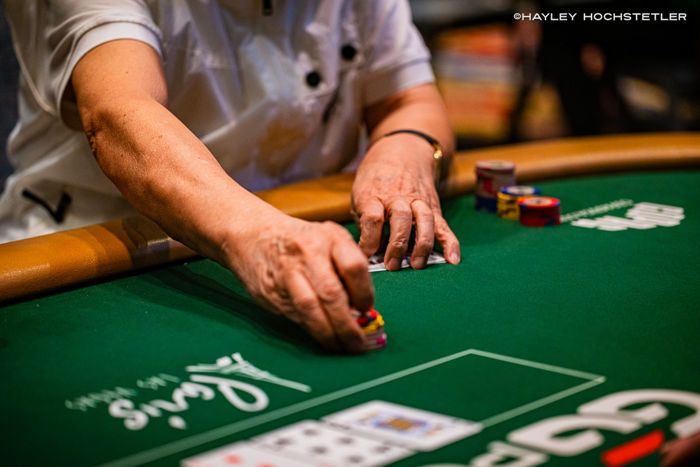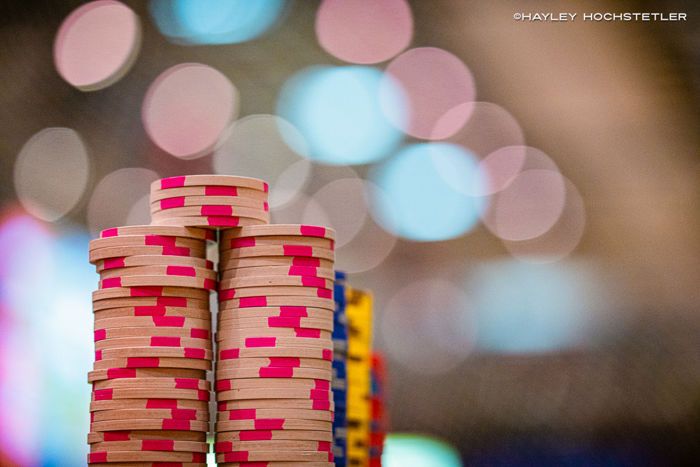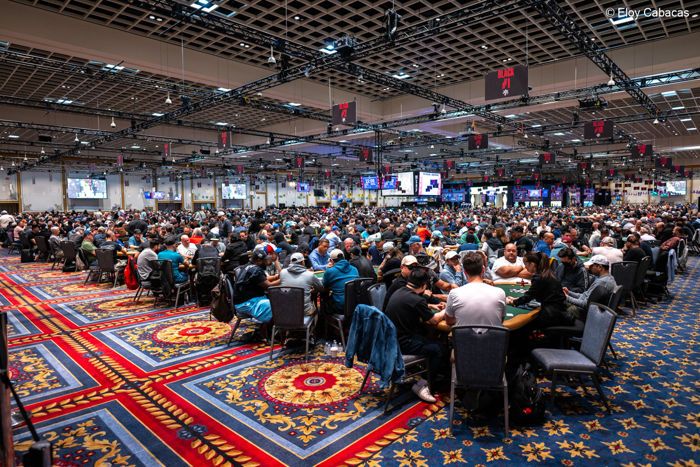Relating to multi-table match technique, the bubble — that’s, when there are just a few eliminations or even perhaps only one till the cash is reached — might be the only most mentioned section of tournaments. That may appear disproportionate, particularly while you consider how the bubble presents conditions and choices that may be completely distinctive when in comparison with each different stage of an MTT.
Gamers do issues on the bubble they do not do at every other stage of the match. Some develop into ultra-tight, open-folding monsters with quick stacks. Others flip ultra-loose, open-raising eight fingers in row — one thing that just about by no means occurs at different factors in MTTs.
Then once more, efficiently surviving cash bubble means crossing that line that divides cashers and non-cashers, and solely those that do make it via have an opportunity on the larger prizes awaiting these making the ultimate desk and the eventual winner. You might say that in contrast to every other time earlier than or after, when the match is on the bubble the whole prize pool is at “stake.”
It is sensible, then, that a lot consideration has been given to bubble technique. It is a stage when a mistake will be particularly detrimental, both drastically lessening your probabilities of making a major revenue or inflicting you to overlook the cash altogether.
By the “bubble” we’re referring in a basic sense to the stage of the match when everybody is kind of conscious of the truth that the subsequent knockout (or subsequent few) will imply reaching the money. In enormous MTTs with tons of and even 1000’s of gamers, the “bubble” will be prolonged and begin when there are nonetheless tables’ price of gamers left to bust. In the meantime in a small 40-person match, the “bubble” could solely actually come into play when all the way down to that final knockout earlier than the money.

Find out how to Play the Bubble
For our functions, we’re dividing our “Bubble Play” tip into three major tips, every of which has its personal particulars to think about.
1. Distinguish “gamers” from “non-players”
You are already doing a very good job of recognizing your opponents’ kinds and watching how they play even after you’ve got folded fingers. As soon as the bubble has lastly arrived, attempt to set up who amongst these at your desk proceed to be “gamers” getting concerned at roughly the identical frequency (or rather less) than earlier than, and who has extra clearly develop into a lot tighter with their beginning hand choice, clearly content material to attempt to make the cash with out including additional to their stacks.
Clearly those that are shortest on chips are considerably exempt from this categorization — in the event that they’re conscious of their scenario, they will essentially tighten up till they choose up a hand price shoving. However watch the massive and medium stacks who nonetheless have extra choices out there to them than simply to push or fold. Particularly word those that have stopped opening pots from late place when it folds to them and/or aren’t defending their blinds.
Whereas stack sizes are vital (see #2 beneath), be extra keen to stress these “non-players” with preflop opens, raises or three-bets from place once they do are available, and postflop continuation bets if fingers get that far. In the meantime train warning with the “gamers” who seem much less affected by the approaching bubble, recognizing they are not going to be as keen to surrender on pots even once they haven’t got the strongest of holdings.

Take into accout — typically in MTTs the quantity of the buy-in and the payouts have quite a bit to do with the relative share of “gamers” and “non-players” on the bubble.
In low buy-in tournaments comparatively few gamers might be as involved about making the cash and incomes small min-cashes. In the meantime in larger buy-in occasions cashing would possibly create a excessive variety of “non-players” as cashing means that rather more to them. When masking the WSOP Major Occasion (for instance), we have really seen a few uncommon cases of gamers folding pocket aces on the bubble out of worry of lacking the cash in such a prestigious occasion — it is true!
2. Stay conscious of stack sizes and relative threat
When discussing “Center Stage Technique” we emphasised how stack sizes start to affect your method to particular fingers and conditions. On the bubble, stack sizes are likewise of nice significance as they instantly have an effect on the relative threat every participant faces when selecting to enter a hand.
Massive stacks must be cautious of different huge stacks who’ve the potential to hurt them ought to they get too closely concerned and construct vital pots. Medium stacks can likewise trigger vital harm to the massive stacks, though they typically will be extra simply pressured — e.g., folding to the massive stacks’ mild three-bets or to postflop aggression with something lower than the highest of their vary.
With an enormous stack you may as well accumulate vital chips in case your desk is just not displaying resistance to your preflop opens. If that is the case, widen your vary and even increase from early place, if the raises preserve getting via. Do not develop into too unfastened, although, and actually tighten up your calling vary when quick stacks shove into you (together with over your opening raises). Should you’ve opened with min-raise from late place holding a trash hand and a participant within the blinds three-bets all in for 10 BBs, there isn’t any disgrace in folding and giving up these two BBs. Do not feel obligated to name and attempt to burst the bubble, both — in reality, for you, holding the bubble going is usually going to be preferable, supplying you with nonetheless extra probabilities to maintain accumulating.
Medium stacks will wish to watch out of the massive stacks, after all, until they appear to be amongst that class of “non-players” famous above (which occurs). They’ll additionally stress fellow medium stacks and quick stacks, though they will must be extra selective with their opens and fewer keen to place themselves into too many raise-fold conditions preflop comparable to simply described.
Having a medium stack means you may fold your method via the bubble interval with out struggling too nice of a success going ahead, although strive if you cannot to show into a type of “non-players” and let your self be abused too readily. Usually the gamers who aren’t keen to maintain “taking part in poker” with common chips on the bubble are ones who by no means go deep in tournaments, often destined solely to earn small cashes at finest.
Even so, if you’re medium-stacked and take too many “mini-stands” with unfastened preflop calls and blind defenses, you may as well harm your probabilities of doing way more as soon as you’ve got reached the cash, so do not feel too unhealthy about tightening up when it appears warranted.
Brief stacks ought to at all times do what they’ll to estimate the place they stand relative to different quick stacks when the bubble arrives. That is usually straightforward to do when taking part in on-line poker tournaments through a fast look on the foyer. In stay tournaments — particularly these with massive fields — it may be somewhat tougher to know with precision whether or not your eight BB stack is the shortest within the room or if there are 4 gamers with much less.
Know that with 8-10 huge blinds or extra you are not in “push-or-fold” mode simply but. Know additionally that with a stack that huge (or somewhat larger), you continue to possess some first rate “fold fairness” which suggests medium stacks and even huge stacks aren’t going to be that wanting to name off while you open-raise. This implies you may probably open-raise profitably with a wider vary than simply the topmost premiums. Three-bet shoving will be extra dangerous, although, and naturally calling off your stack with less-than-premiums (e.g., weak aces, potentially-dominated fingers like king-jack, queen-nine, and many others.) is just not really useful.
Get all the way down to lower than 5-6 huge blinds and you’re probably going to need to commit with lower than the most effective starters. Perceive your fold fairness goes to be very low while you push a “micro” stack, that means you will probably be referred to as and need to survive a showdown.
In opposition to unfastened opponents, you will nonetheless need an ace or king (or a pair, after all) as you will stand to be a favourite versus most of their calling ranges. However towards tight gamers you is perhaps higher off jamming with 9♠8♠ than with Okay♦9♣ and even A♣5♦, as their calling ranges will extra probably dominate these weak ace- and king-hands versus your having two “stay” playing cards.

3. Avoid passive play
As a lot of the above recommendation suggests, no matter your scenario is with regard to the taking part in kinds of your opponents or the scale of your stack, being overly passive throughout the bubble — that’s, checking and calling quite a bit relatively than betting and elevating — is an efficient method to harm your probabilities both of going deep or making the cash in any respect.
Passive play typically is not really useful poker technique at any stage of a match, though when up towards unfastened gamers it may be worthwhile to name them down together with your good fingers as they construct pots and bluff off chips. Nevertheless by the point the match reaches the bubble, chips develop into too useful to threat them with too many calls, particularly unfastened one.
Exhibiting the initiative with preflop opens and three-bets and postflop main bets typically will serve you effectively on the bubble. That is as a result of everybody’s inclination to fold in response to aggression has elevated, typically even among the many huge stacks.
Conclusion
Pointing again to our earlier dialogue of “Chip Accumulation vs. Survival” in multi-table tournaments, the bubble interval is usually one the place these two approaches reveal themselves in excessive methods.
Most gamers understandably develop into very centered on survival with the cash so close to, with some even neglecting the significance of chip accumulation altogether. In the meantime those that are inclined to carry out higher within the post-bubble interval and late stage of the tournaments — those who make ultimate tables and win — are sometimes those who proceed to consider accumulating chips by making the most of those that aren’t.
As we talked about earlier than, it is at all times vital to stability your efforts to build up chips and to outlive MTTs. Doing this effectively throughout the bubble can set you up properly to make that deep run and make greater than the minimal in tournaments.
Additionally on this collection…
Prepared to sit on the desk? Put these multi-table match suggestions into follow at PokerStars.

















